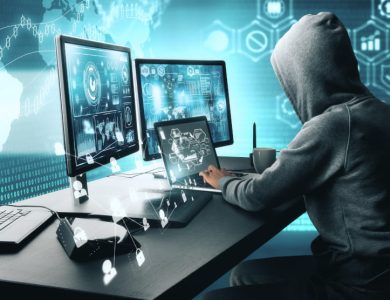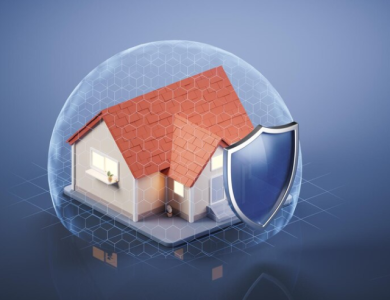Introduction to Receipt Digitization and its Benefits
Receipt digitization has revolutionized the way businesses handle their financial transactions. Gone are the days of manually sorting through stacks of paper receipts, struggling to decipher faded ink and messy handwriting. Thanks to advancements in technology, we now have a powerful ally in automating this process: Optical Character Recognition (OCR) combined with deep learning.
In this blog post, we will delve into the world of receipt digitization and explore how OCR and deep learning work together to simplify and streamline business operations. From understanding how these technologies function to uncovering their advantages and limitations, we’ll leave no stone unturned. So grab your favorite beverage, and settle in for a fascinating journey through automated receipt digitization!
Understanding OCR (Optical Character Recognition) and Deep Learning
OCR (Optical Character Recognition) and Deep Learning are two powerful technologies that work hand in hand to revolutionize the process of receipt digitization. Let’s delve deeper into understanding these technologies.
OCR is a technology that enables the extraction of text from scanned images or documents. It converts physical receipts into digital data by recognizing characters and symbols on the receipt image. This allows for easy retrieval, organization, and analysis of information contained within the receipts.
Deep Learning, on the other hand, is a subset of artificial intelligence that mimics how human brains learn and process information. Through neural networks, deep learning algorithms can analyze vast amounts of data to recognize patterns and make accurate predictions.
When combined, OCR and Deep Learning enable automated receipt digitization with remarkable accuracy. OCR extracts text from the images, while deep learning algorithms enhance recognition capabilities by continuously learning from data patterns.
This powerful combination offers several benefits in terms of time efficiency, cost savings, and improved accuracy compared to manual entry methods. By automating receipt digitization using OCR and deep learning techniques, businesses can streamline their operations, reduce errors caused by manual inputting mistakes, eliminate tedious administrative tasks for employees, enhance productivity levels significantly.
However, Understandably there might be some challenges associated with implementing OCR and deep learning in receipt digitization processes, such as dealing with poor-quality scans or unfamiliar fonts but advancements in technology continue to address these limitations offering exciting possibilities for future enhancement
In conclusion, Receipt Digitization through OCR & Deep Learning has proven to be an invaluable asset across various industries providing businesses with streamlined workflows enhanced efficiency reduced costs while paving way towards better insights informed decision-making
How OCR and Deep Learning Work Together for Receipt Digitization
OCR (Optical Character Recognition) and deep learning are two powerful technologies that work together seamlessly to automate the process of receipt digitization. OCR is a technology that converts printed or handwritten text into machine-readable data, while deep learning uses neural networks to learn patterns and make accurate predictions.
When it comes to receipt digitization, OCR plays a crucial role in extracting relevant information such as merchant name, date, time, and transaction amount from the scanned or photographed receipts. It scans the image and recognizes characters using advanced algorithms. However, OCR alone may encounter challenges in accurately recognizing certain fonts, handwriting styles, or distorted images.
This is where deep learning steps in. By training models with vast amounts of labeled data, deep learning algorithms can analyze complex visual features and contextually understand the content of receipts more accurately. Deep learning improves the accuracy of OCR by recognizing patterns within different fields on a receipt and contextualizing them based on their position relative to other elements.
By combining both technologies effectively, organizations can achieve highly accurate and efficient automated receipt digitization processes. The integration enables businesses to streamline expense management workflows by eliminating manual data entry tasks while ensuring high levels of accuracy.
In addition to enhancing efficiency and reducing errors associated with manual processing methods, leveraging OCR and deep learning for receipt digitization also offers scalability benefits. These technologies can handle large volumes of receipts at scale without compromising accuracy or speed.
Despite these advantages offered by OCR and deep learning for automating receipt digitization processes, there are limitations to consider as well. For instance, poor-quality scans or photographs may impact recognition accuracy due to image noise or blurriness. Additionally,
As technology continues to evolve rapidly, this collaboration between OCR and deep learning will only become more sophisticated in its capabilities for automated receipt digitization. Emerging enhancements might include improved recognition accuracy, expanded language support, better handling of complex layouts, noise reduction techniques, etc.
The Advantages of Automating Receipt Digitization
Automating receipt digitization offers several advantages that can significantly streamline business processes and improve efficiency. One of the key benefits is the elimination of manual data entry, which not only saves time but also reduces the risk of errors. With automation, receipts can be quickly scanned or photographed using a mobile device and then processed using receipt OCR and deep learning algorithms.
By automating receipt digitization, businesses can have real-time access to their financial data. This allows for faster decision-making and better financial management. Additionally, automated systems can categorize expenses automatically based on predefined rules, making it easier to track spending and analyze trends.
Another advantage is improved organization and accessibility. Digitized receipts can be stored in a centralized database or cloud-based system, making them easily searchable and retrievable whenever needed. This eliminates the need for physical filing cabinets or stacks of paper receipts.
Furthermore, automation enables seamless integration with other software applications, such as accounting systems or expense management platforms. This ensures that all relevant information is synchronized across different tools, reducing duplication of efforts and improving overall workflow efficiency.
Automating receipt digitization brings numerous advantages, including reduced manual effort, real-time access to financial data, improved organization and accessibility, as well as seamless integration with other software applications. These benefits contribute to enhanced productivity and cost savings for businesses of all sizes
Challenges and Limitations of OCR and Deep Learning in Receipt Digitization
Implementing OCR and deep learning technologies for receipt digitization brings numerous benefits, but it’s not without its challenges. One major obstacle is the accuracy of the OCR process. While OCR has made great strides in recognizing characters accurately, it still struggles with handwritten or poorly printed receipts.
Another challenge lies in the variability of receipt formats. Different stores may have different layouts, fonts, and sizes on their receipts, making it difficult for OCR algorithms to consistently extract information correctly. This can lead to errors or missing data when digitizing receipts.
Additionally, deep learning models require vast amounts of training data to achieve high levels of accuracy. Obtaining labelled training data can be time-consuming and labour-intensive, especially when dealing with a wide variety of receipt types.
Furthermore, processing large volumes of receipts in real time can also pose a challenge. The speed at which receipts are captured and processed must match the pace at which they are received by businesses.
Privacy concerns regarding sensitive customer information on scanned receipts need careful consideration during the implementation of automated systems.
Addressing these challenges requires ongoing research and development efforts to improve both OCR algorithms’ accuracy as well as deep learning models’ ability to handle diverse receipt formats efficiently.
By acknowledging these limitations upfront and working towards solutions proactively, we can further enhance automated receipt digitization processes for better efficiency and accuracy in various industries such as retail, hospitality, accounting services, and more.
Future Possibilities and Enhancements in Automated Receipt Digitization
As technology continues to advance at a rapid pace, the future of automated receipt digitization holds exciting possibilities. With ongoing developments in OCR and deep learning algorithms, we can expect significant enhancements in the accuracy and efficiency of this process.
One area that shows great potential is the integration of machine learning into receipt digitization systems. By training algorithms on large datasets of receipts, these systems can learn to recognize patterns and extract relevant information with a higher degree of accuracy. This could lead to fewer errors and faster processing times, ultimately improving the overall user experience.
Additionally, advancements in natural language processing (NLP) could further enhance automated receipt digitization. NLP techniques enable machines to understand human language more effectively, allowing for better interpretation of complex data found on receipts. This would enable systems to not only capture basic information like vendor name and transaction amount but also extract more nuanced details such as product descriptions or payment terms.
Another area ripe for improvement is image recognition technology. As cameras on mobile devices continue to improve in quality, automated receipt digitization systems can leverage these advancements by incorporating advanced image recognition algorithms. This would result in clearer images being captured and processed accurately, even under challenging lighting conditions or with low-resolution scans.
Furthermore, there is potential for integration with other technologies, such as blockchain or cloud computing solutions. Blockchain provides an immutable ledger where digital records can be securely stored, while cloud computing allows for scalable storage capabilities without the need for extensive physical infrastructure. These technologies combined could offer enhanced security, accessibility, and scalability for storing digitized receipts.
Conclusion
In this digital age, leveraging technology to automate receipt digitization has become increasingly important for businesses and individuals alike. By utilizing OCR and deep learning algorithms, it is now possible to efficiently extract relevant information from receipts and store them in a digital format.
The benefits of automating receipt digitization are numerous. It saves time by eliminating the need for manual data entry, reduces the risk of errors that can occur during the transcription process, and provides easy access to organized financial records. This not only streamlines accounting processes but also enhances overall productivity.
OCR technology plays a crucial role in converting printed or handwritten text on receipts into machine-readable data. Deep learning algorithms further enhance this process by continuously improving recognition accuracy through training on large datasets.
However, it’s important to acknowledge the challenges and limitations associated with OCR and deep learning in receipt digitization. Factors such as poor image quality or unconventional fonts can affect recognition accuracy, requiring additional effort to ensure accurate extraction of information.
Despite these challenges, the future looks promising for automated receipt digitization. Advancements in AI technologies will continue to improve OCR accuracy rates while addressing current limitations. Integration with cloud-based platforms will enable seamless synchronization across devices, making it even easier for users to manage their expenses digitally.




